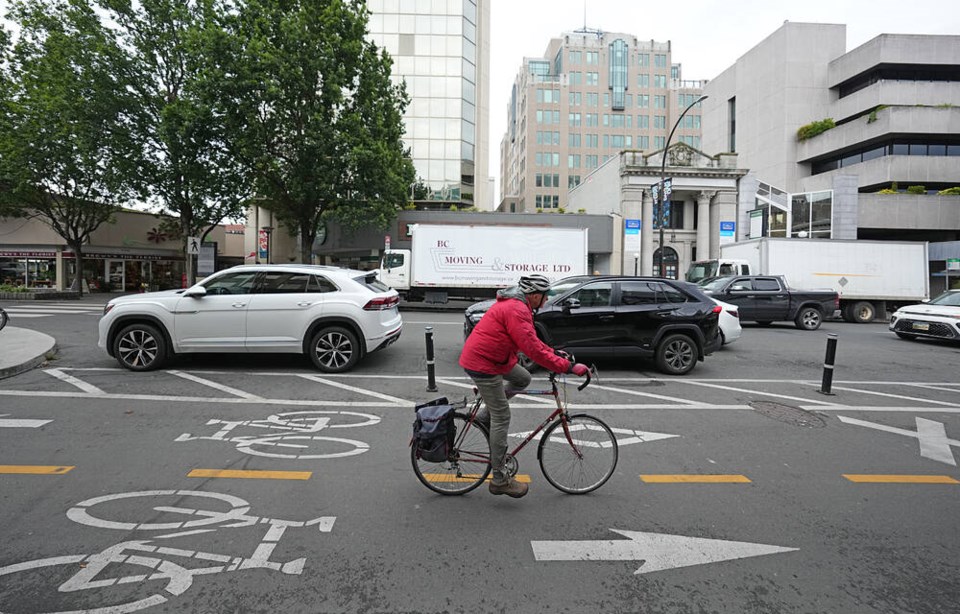Compared with other Canadian metro centres, Greater Victoria commuters love to bike — but they also love driving to work alone too, according to the latest data release from Statistics Canada.
Commuters are more likely to walk or bike in Greater Victoria compared to any other metropolitan centre in Canada, with 18.7 per cent choosing some form of active transportation to get to work.
Halifax saw the second-most pedestrians and cyclists at 12.3 per cent.
However, Greater Victoria car commuters were more likely to travel alone to work compared to other metro dwellers in the country, with 92.4 per cent of drivers reporting they went to work solo in May.
Of the 15 most populous metro areas tracked by Statistics Canada, Victoria ranked second for solitary car commuters. Only Edmonton was higher at 92.8 per cent.
The national average was 89.5 per cent in May.
Victoria Transport Policy Institute executive director Todd Litman said Statistic Canada’s commuter travel data is not the best indicator of larger travel trends as it doesn’t differentiate between the capital region’s urban core and its outlying communities.
It’s common to have seemingly contradictory trends in the field of travel and transportation planning, depending on what information is left in or out, he said.
“For example, the census data does not take into account children and how they get to school, or how you go shopping, or lots of other types of trips.”
An average person’s commutes only makes up around a fifth of overall travel as most travel is done for other purposes such as errand-running, socializing and leisure, he said.
Litman said the Capital Regional District’s every-five-years survey of travel patterns provides deeper insight on how residents get around.
The latest survey, published in 2023 — which Litman described as “kind of overwhelming, 200 pages of very detailed statistics” — showed a slight overall reduction of car use in the capital region, with more zero- and one-car households reported in 2022 versus 2017.
Car use is much higher in the West Shore and Saanich Peninsula, but in Victoria, less than half of daily trips were made by car, survey results show.
Capital Bike executive director Colleen Sparks attributed the capital region’s high active transportation commute rates to significant infrastructure improvements made to roads and sidewalks.
Sparks said that educating people about how easy it is to bike in the capital region will help further increase active transportation uptake.
“We know there is more that can be done to coax people out of single occupancy vehicles,” she said in a statement.
Of the major Canadian metro centres, residents of Greater Victoria enjoyed the shortest average commute of 20.5 minutes, an 80 second decrease in average commute times compared to May 2023, according to Statistics Canada.
>>> To comment on this article, write a letter to the editor: [email protected]




